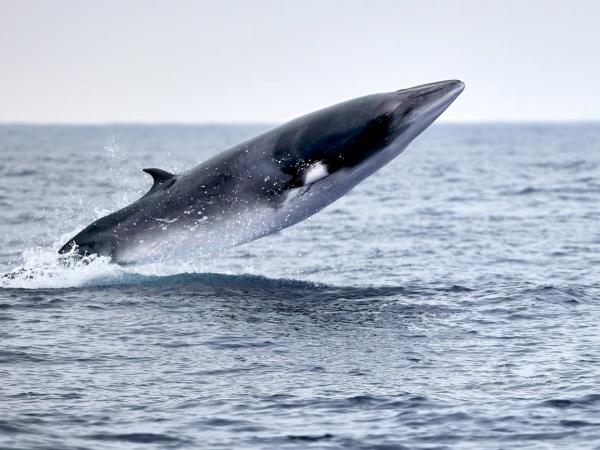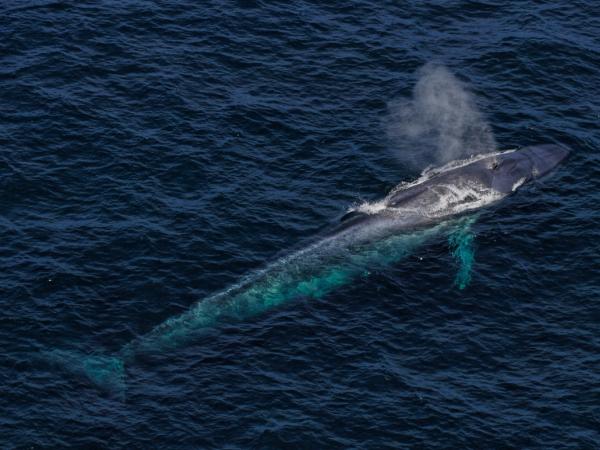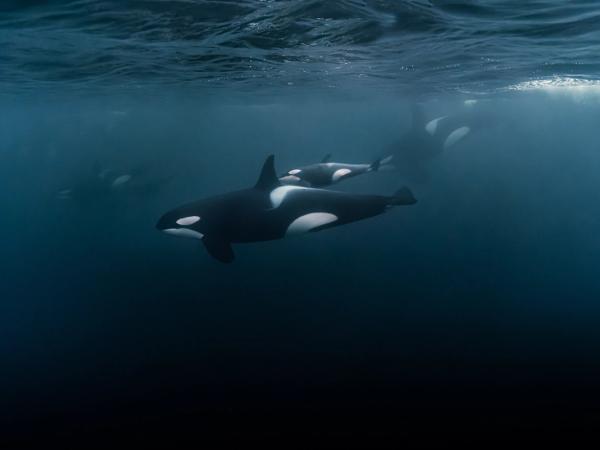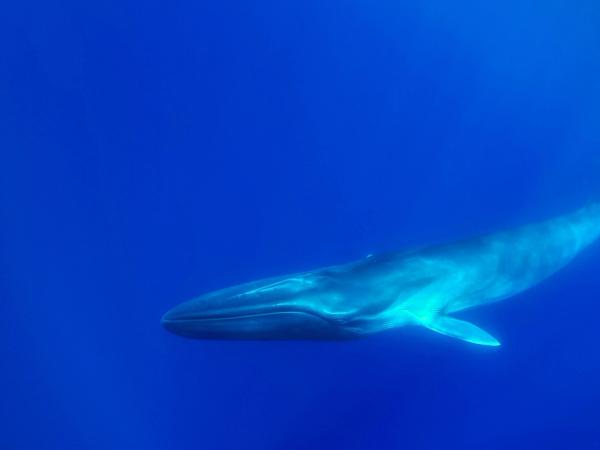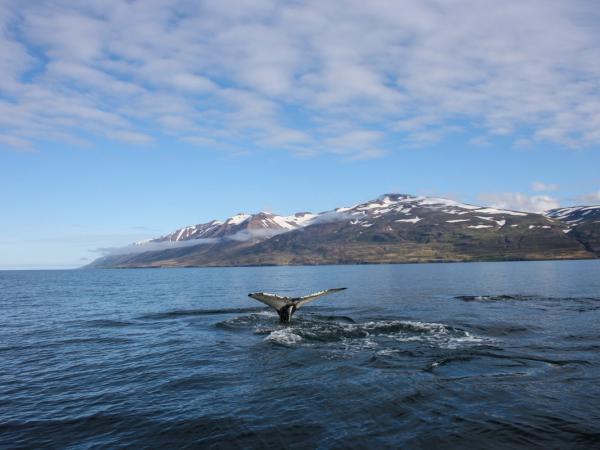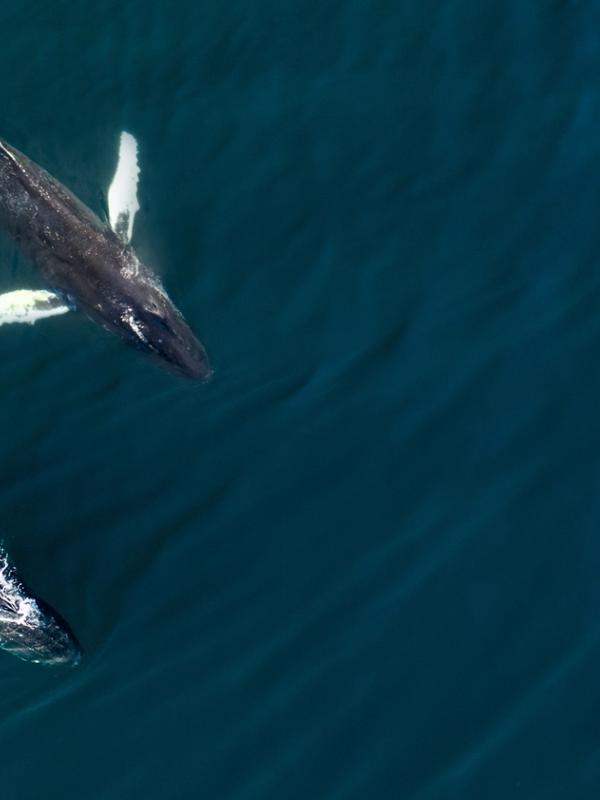
Whale Watching in Iceland
Iceland is a unique and breathtaking destination that allows travelers to witness some of the world's most magnificent creatures in their natural habitat - whales. With a coastline that stretches over 3,000 miles and a rich marine ecosystem, Iceland is one of the best places in the world for whale watching.
From the majestic humpback whale to the elusive blue whale and the playful orca, Iceland's waters are home to a diverse range of whale species. In this article, we'll take a closer look at what makes whale watching in Iceland so special, where to go, and what to expect on your trip. Let’s dive in!
Types of Whales in Iceland
Iceland's waters are home to a diverse range of whale species, making it a prime destination for whale-watching enthusiasts. Here are some of the most common whales you might spot during a whale-watching tour in Iceland.
- Humpback Whales - Known for their acrobatic displays, humpback whales are a favorite among whale watchers. These magnificent creatures can grow up to 50 feet long and weigh over 40 tons.
- Minke Whales - The smallest of the baleen whales, minke whales are commonly found in Iceland's waters. They are agile swimmers and can reach speeds of up to 20 miles per hour.
- Blue Whales - The largest animal on the planet, blue whales can grow up to 100 feet long and weigh over 200 tons. While they are not as commonly seen as other whale species, there have been sightings of blue whales in Iceland's waters.
- Orcas - Also known as killer whales, orcas are highly social and intelligent creatures. They are known for their striking black-and-white coloring and can often be seen breaching out of the water.
- Fin Whales - The second-largest whale species, fin whales are fast swimmers and can reach speeds of up to 25 miles per hour. They are commonly found in Iceland's waters during the summer months.
The Best Places for Whale Watching in Iceland
Here are some of the best places for whale watching in Iceland on your campervan trip:
Húsavík
Known as the "whale-watching capital of Iceland," this town on the north coast is the perfect place to start your whale-watching adventure. Here, you'll find a variety of tours that take you out to Skjálfandi Bay, which is known for its rich marine life and high chances of spotting whales.
Reykjavík
The capital city is not only a hub for cultural activities, but it also offers great opportunities for whale watching. You can join one of the many tours that depart from Reykjavík harbor and head out to Faxaflói Bay. Perfect if you have some time before or after your campervan trip in Iceland.
Akureyri
This charming town in northern Iceland is a popular starting point for whale-watching tours. The nearby Eyjafjörður fjord is home to many different species of whales, including humpbacks, orcas, and blue whales.
Dalvík
Located on the Tröllaskagi Peninsula just north of Akureyri, Dalvík is another great spot for whale-watching tours that explore Eyjafjörður.
Snæfellsnes Peninsula
If you're exploring the long western arm of Iceland, you can join a whale-watching tour in Grundarfjörður. The waters here are home to minkewhales, humpbacks, and orcas.
The Best Time of Year for Whale Watching in Iceland
Whale watching in Iceland is an activity that can be enjoyed all year round, but the best time to go is generally between April and September.
The waters around Iceland are warmer during this time, and the weather is generally calmer and sunnier. This makes for ideal whale-watching conditions, with more chances of spotting the gentle giants of the sea. Humpback whales, minke whales, and white-beaked dolphins are the most sighted species during the summer months.
Spring and autumn, from April to May and from September to October, are also good times to go whale watching in Iceland. During these transitional seasons, the whale watching tours are less crowded, and the prices are more affordable. This is also a great time to see the Northern Lights if you’re lucky, as the nights get darker.
Winter, from November to March, may not be the most popular time to go whale watching, but it's still a great option for those who don't mind the cold. The winter season offers a unique opportunity to spot killer whales, as they follow the herring migration along the west coast of Iceland. Joining a tour that leaves from Grundarfjörður is your best chance during the colder months.
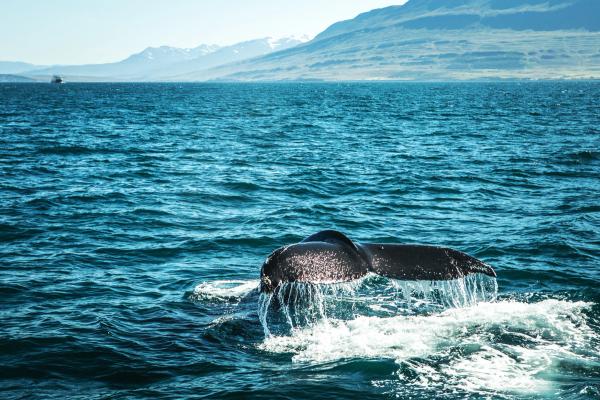
Tips for a Successful Whale Watching Trip
To make the most of your whale-watching trip in Iceland, here are some tips to keep in mind:
- Dress appropriately: Even if the weather seems mild, the wind and spray can make it feel colder on the boat. Dress in layers and bring a waterproof jacket to stay warm and dry.
- Consider sea sickness: If you are prone to motion sickness, take medication before boarding the boat. Ginger candy or other natural remedies can also help ease nausea.
- Be patient: Whale watching is a nature-based activity, and the whales don't always show up on cue. Be prepared to spend some time scanning the water and waiting for the whales to surface.
- Listen to the guide: The guides on the boat are experts in spotting the whales and can provide valuable information about the species you are seeing.
- Bring binoculars: While the whales can often be seen with the naked eye, binoculars can provide a better view of the details and help you spot them more easily.
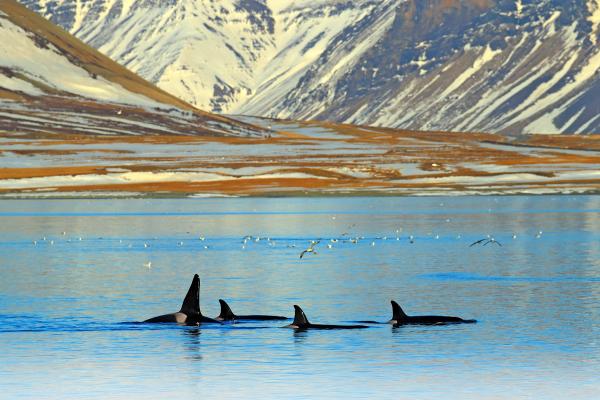
Environmental Considerations for Whale Watching in Iceland
While whale watching is a popular tourist activity in Iceland, it is important to remember that it can also impact the environment and the animals themselves. Therefore, it is essential to be mindful of the following environmental considerations when planning your whale-watching trip:
- Choose a responsible whale-watching company: Look for a company that follows responsible whale-watching practices and has a good reputation. Choose a company that is committed to preserving the environment and the welfare of the whales.
- Respect the whales: When observing the whales, it’s important not to feed them or throw anything into the water.
- Follow guidelines and regulations: Follow the guidelines and regulations set by the Icelandic government and the whale-watching company you choose. These regulations are in place to protect both the environment and the whales.
Do Icelanders Eat Whale?
You might be reading this article and ask yourself: do they eat whales in Iceland?
Whale meat is a traditional food in Iceland, but its consumption has declined in recent years due to environmental and ethical concerns. According to a Gallup survey in 2018, only 34% of Icelanders said they had eaten whale meat in the past 12 months, down from 50% in 2009.
The main consumers of whale meat are older people and tourists, who often try it as a novelty or a cultural experience. However, many Icelanders also oppose whaling and support whale watching as a more sustainable and humane alternative. Whaling is regulated by the Icelandic government, which sets quotas for different species of whales.
The most commonly hunted whales are minke whales and fin whales, which are not endangered, according to the International Union for Conservation of Nature (IUCN). Despite this, the Icelandic Fishing Ministry has signaled that whaling could be stopped by 2024 due to the lack of demand for the meat.
Whales in Icelandic Folklore and the Sagas
Whales in Iceland have a long and rich history in the culture and literature of the island nation. Whales feature prominently in many Icelandic folktales and legends, often as symbols of danger, mystery, or fortune. Some whales, such as the Hafgufa (sea-mist) and the Lyngbakur (heather-back), were considered enormous sea monsters that could devour ships and islands. Other whales, such as the Hvítingur (white one) and the Steypireyður (fin whale), were good omens that brought luck and prosperity to those who encountered them.
Whales also play an important role in the Icelandic Sagas, the medieval narratives that recount the lives and deeds of the early settlers of Iceland. Whales are frequently mentioned as sources of food, wealth, and conflict in these stories. For example, in the Saga of Erik the Red, a whale carcass provides sustenance for the colonists of Greenland during a famine. In the Saga of Grettir the Strong, a whale hunt leads to a violent feud between rival chieftains. In the Saga of the Greenlanders, a whale sighting inspires Leif Erikson to explore and discover Vinland (North America).
Conclusion
Whale watching in Iceland is an unforgettable experience. From playful orcas to massive humpbacks, the chance to see these incredible creatures in their natural habitat is truly special. Dress warm, be patient, and choose a responsible tour—it’s an adventure you won’t want to miss!

